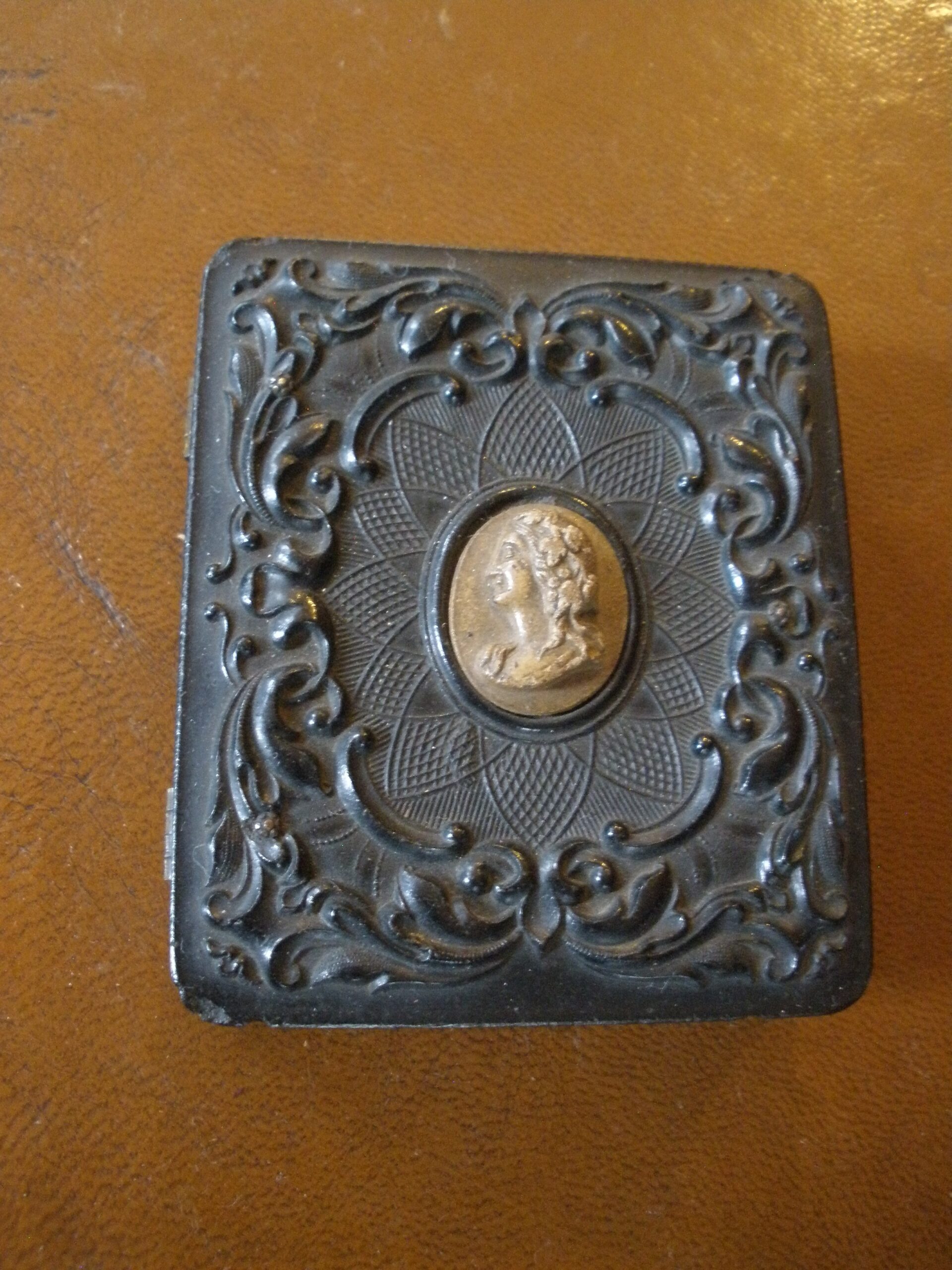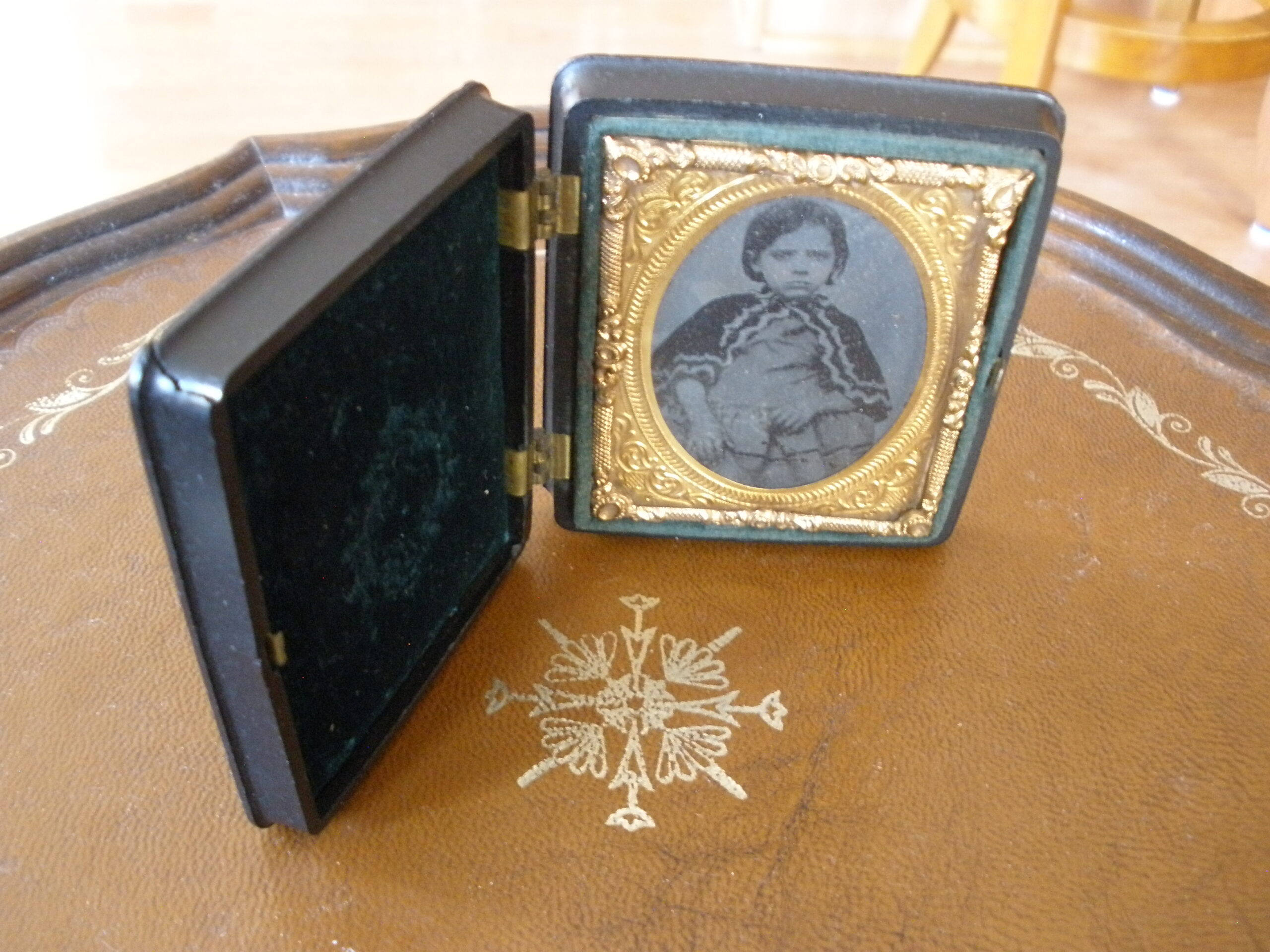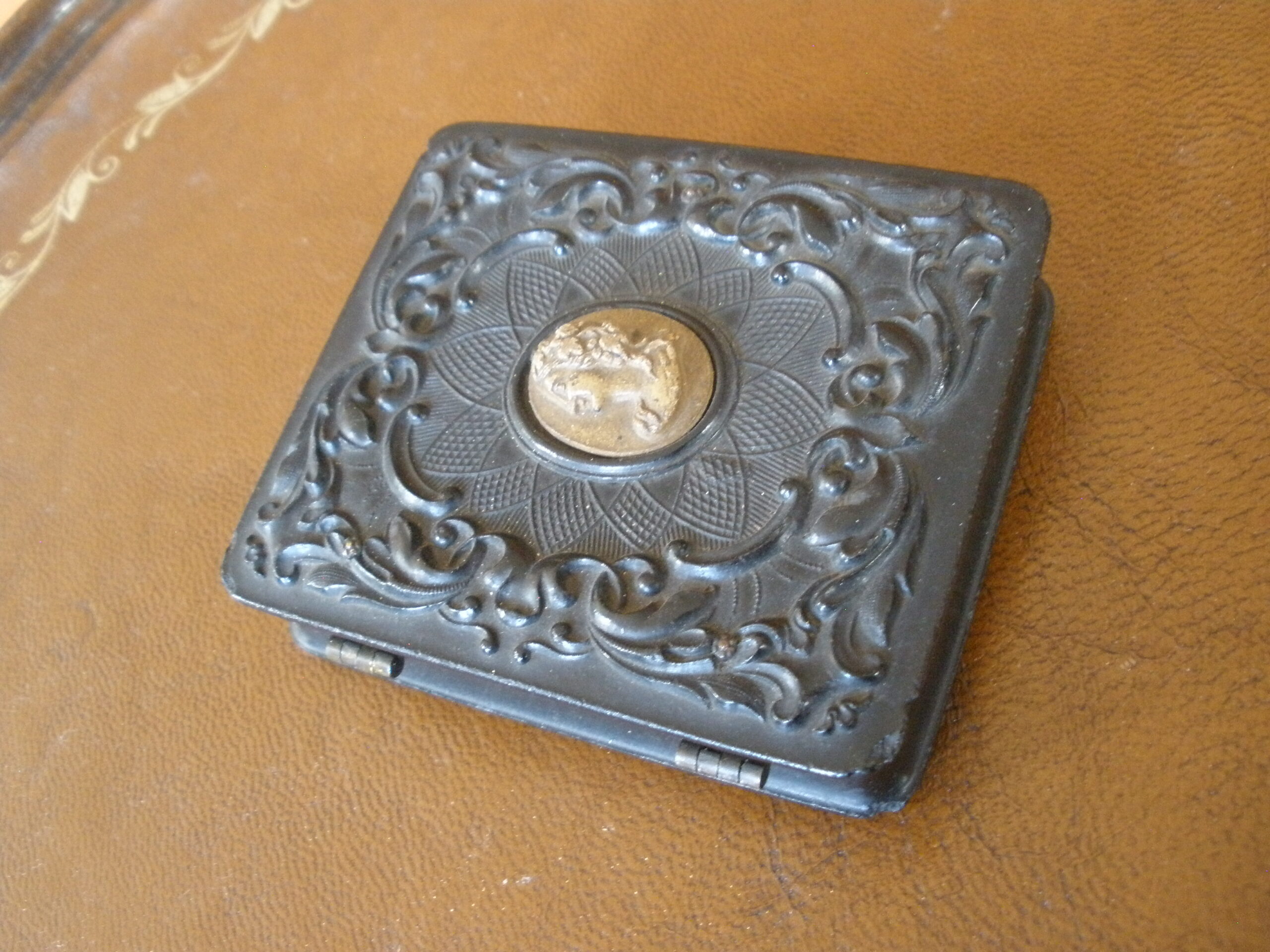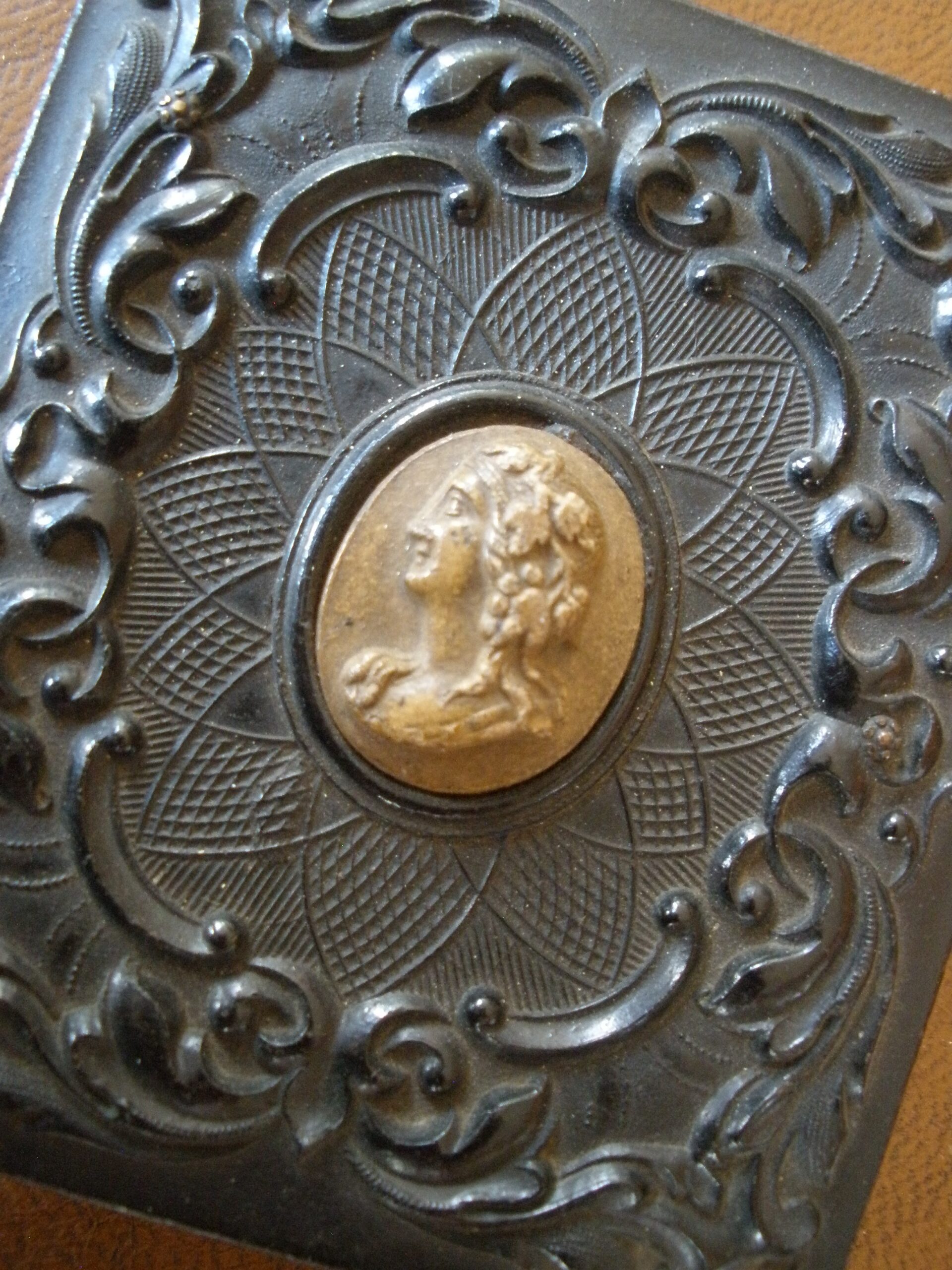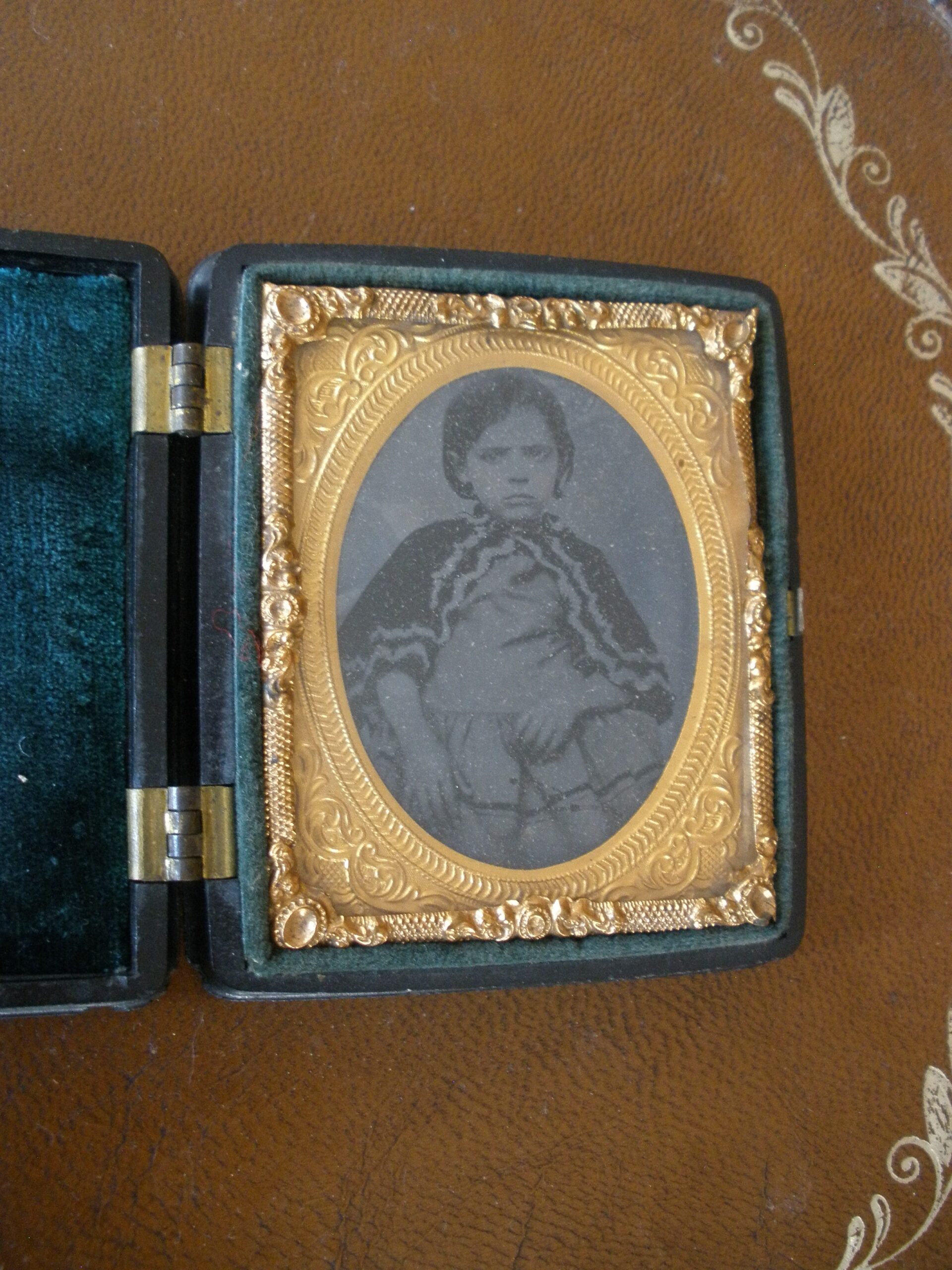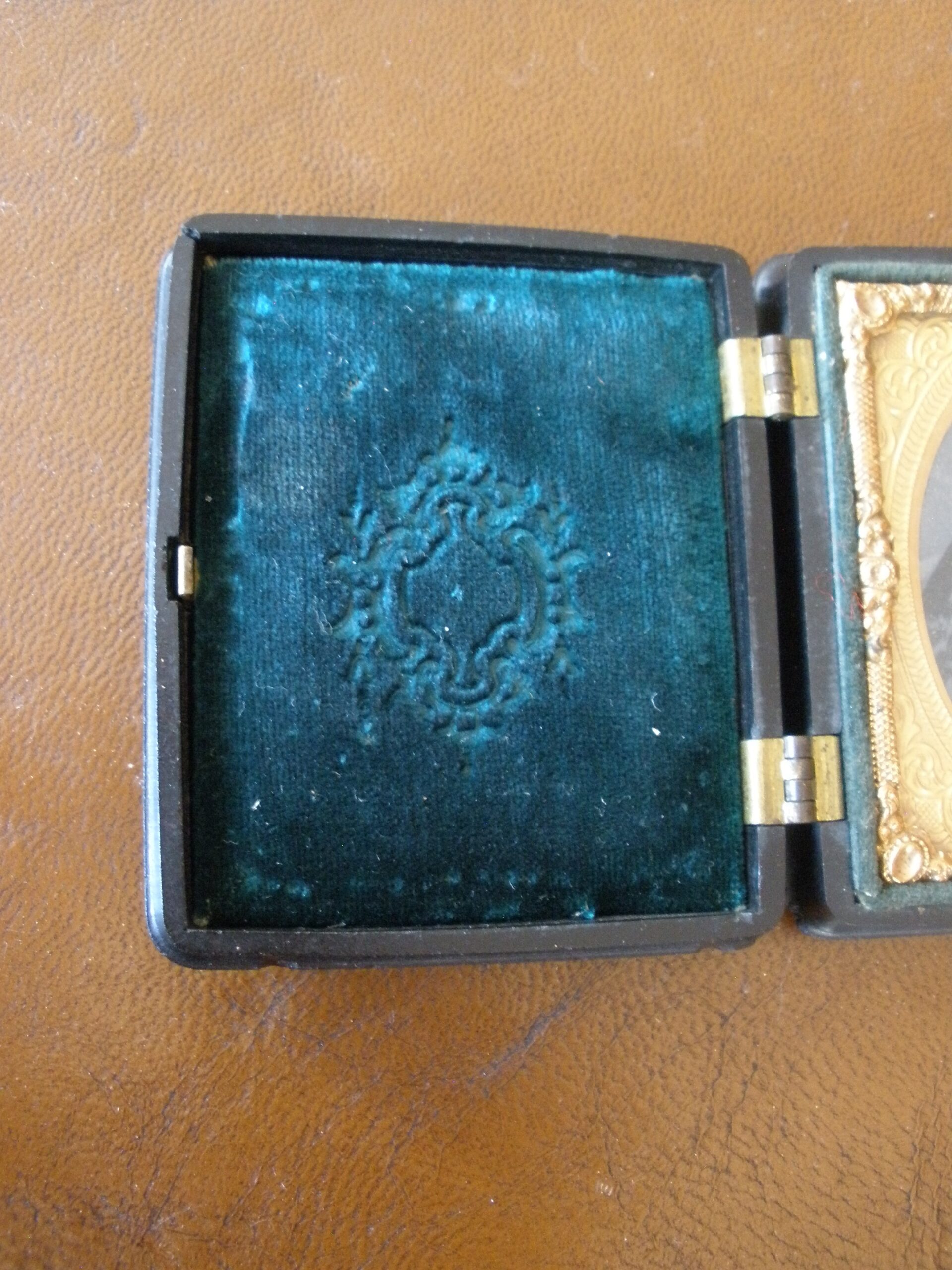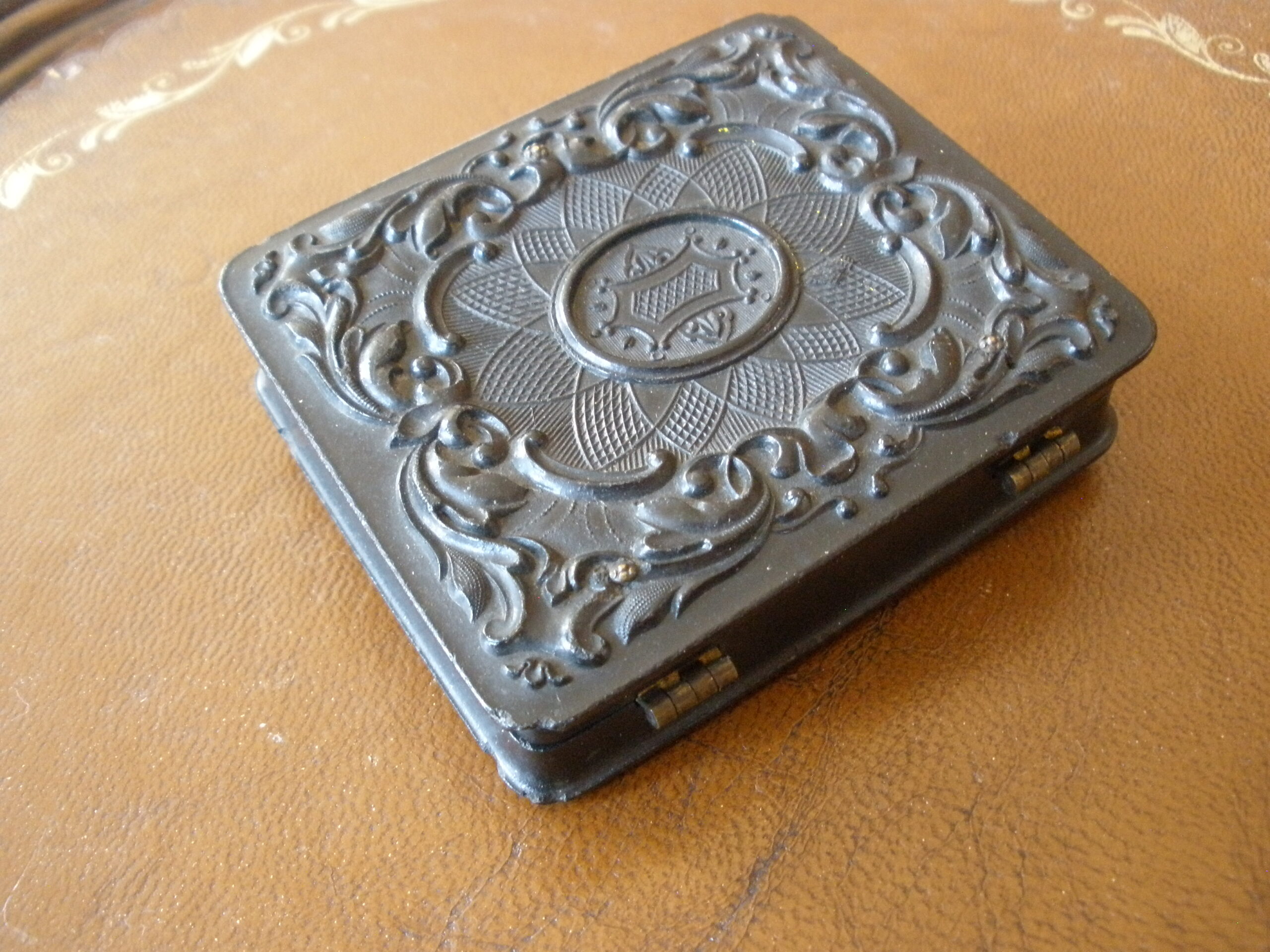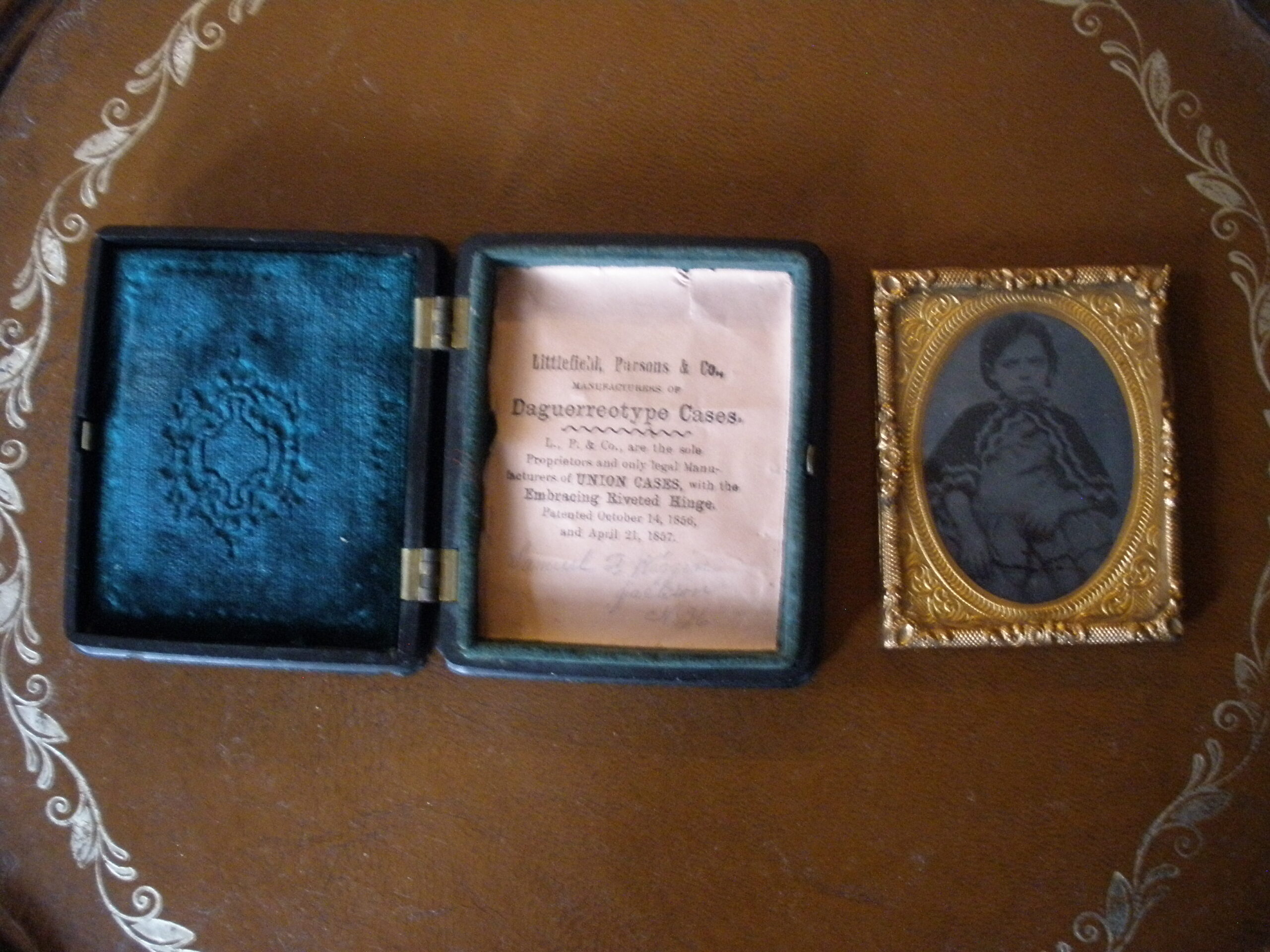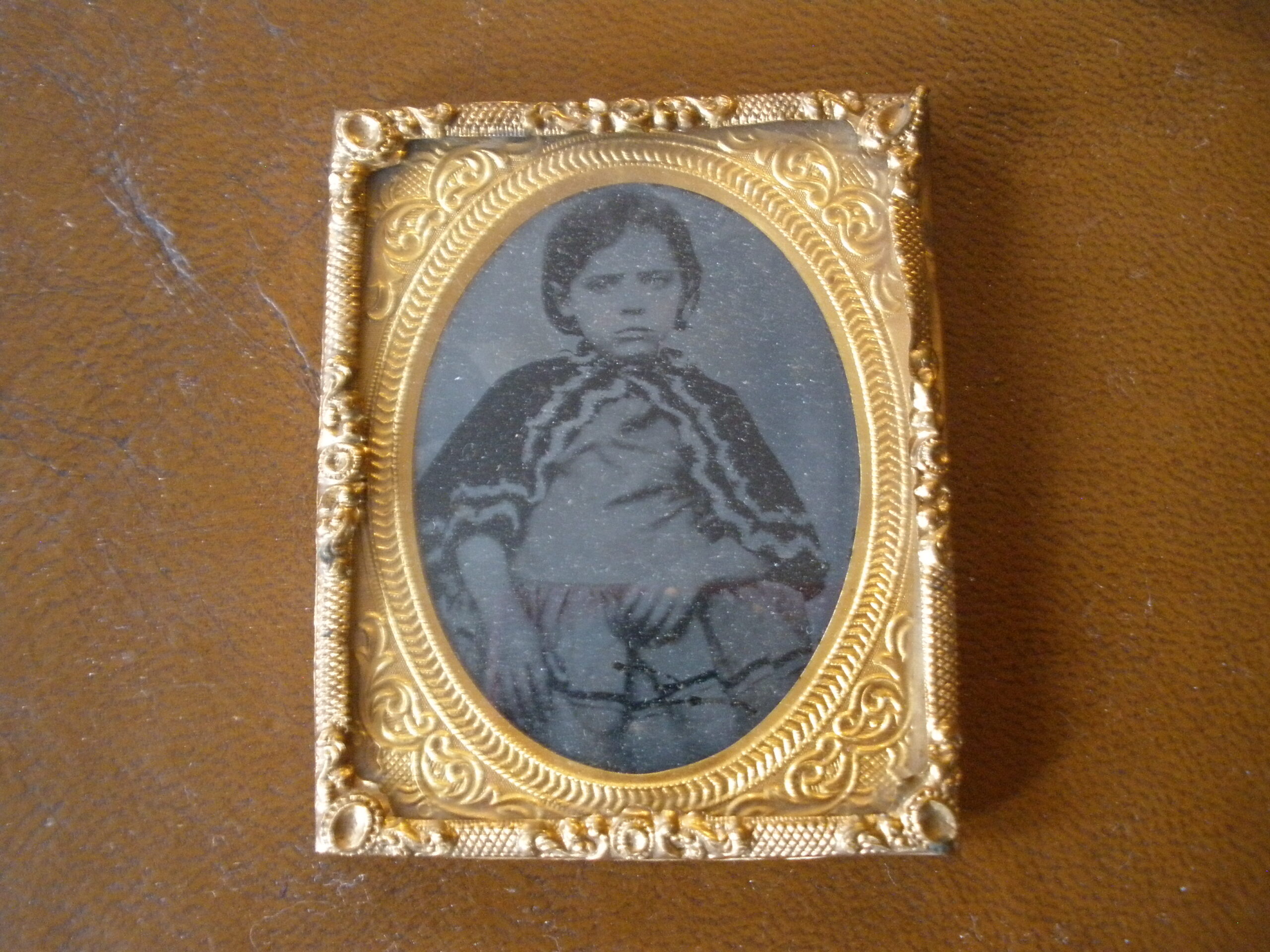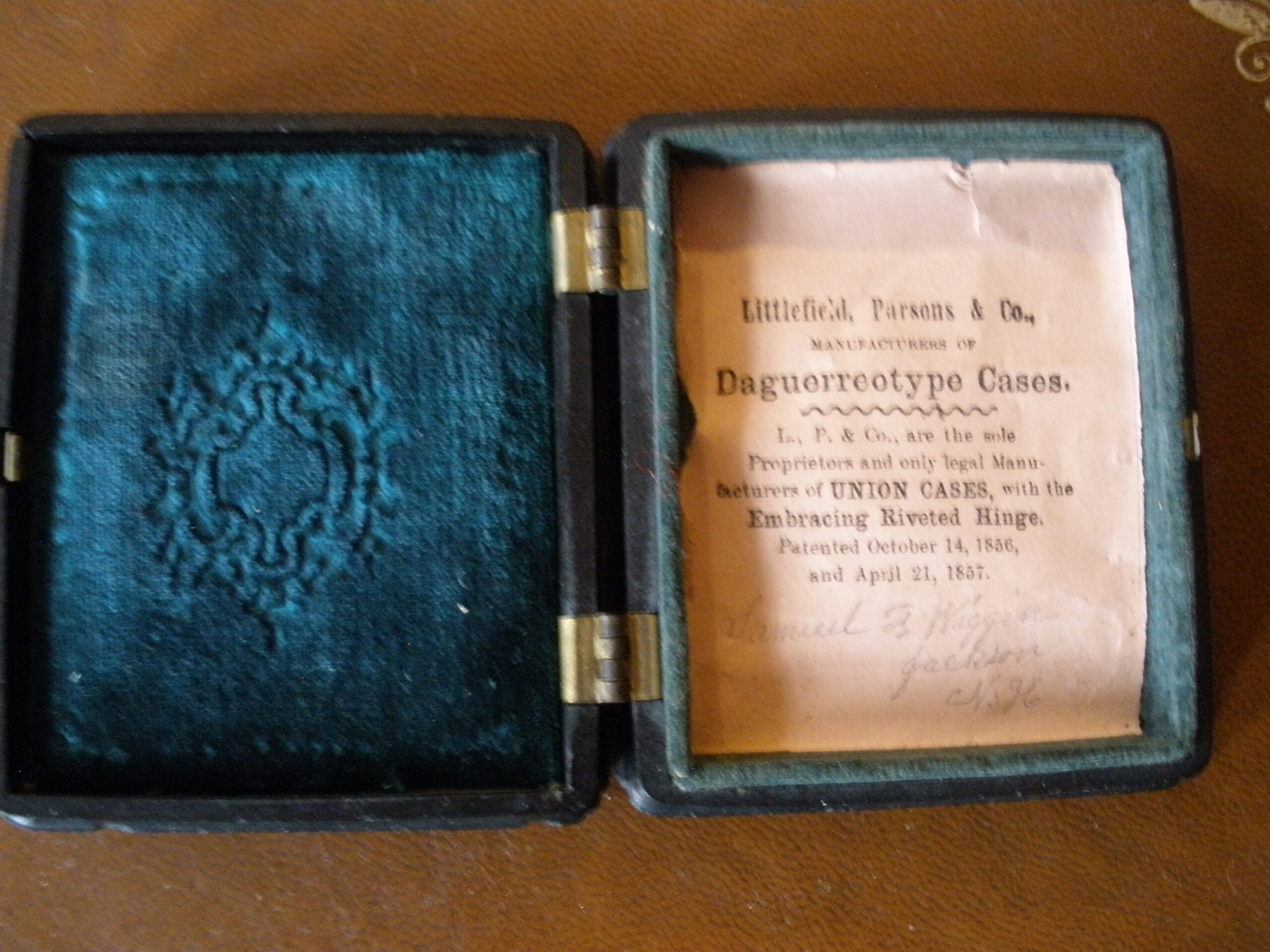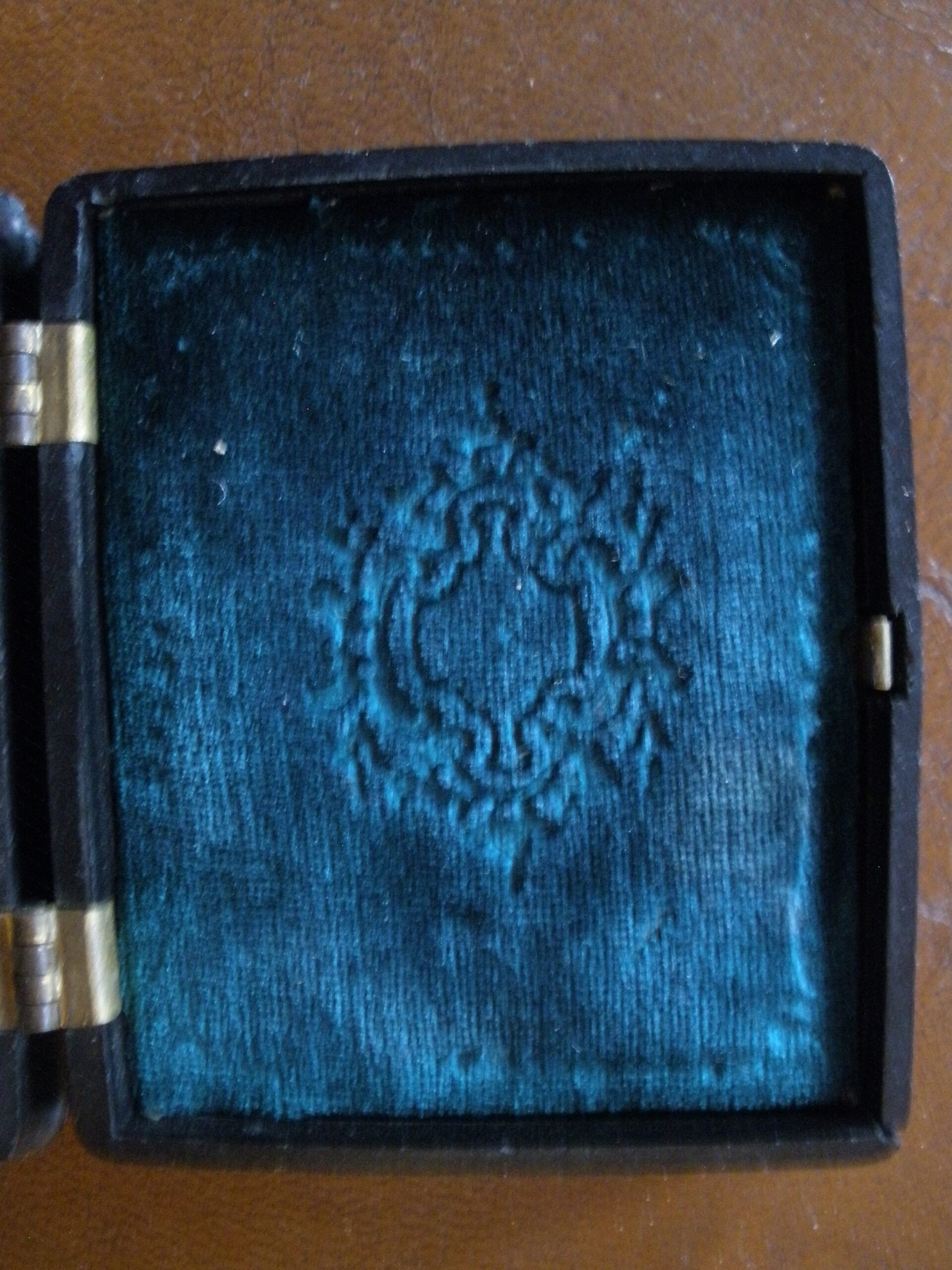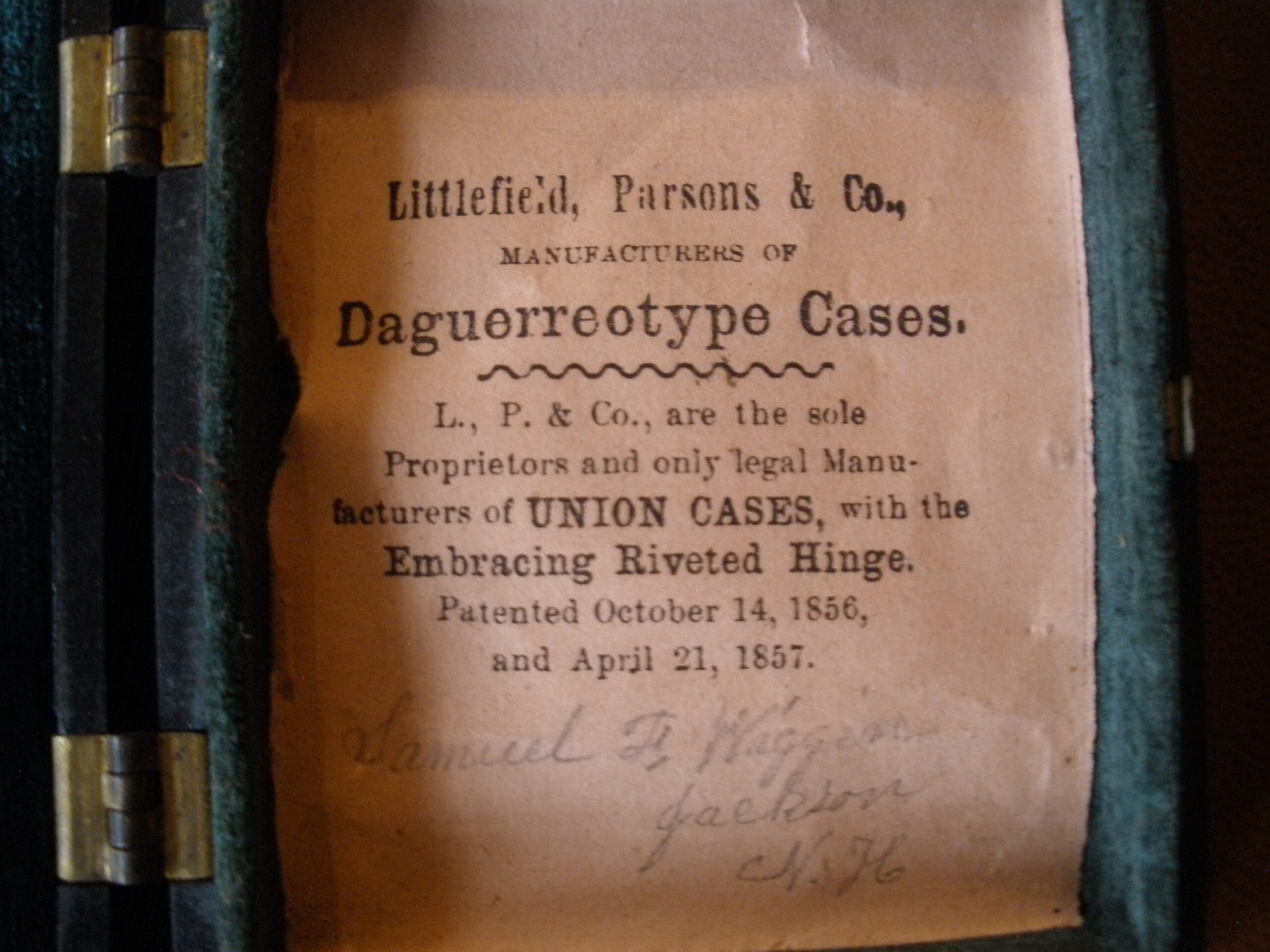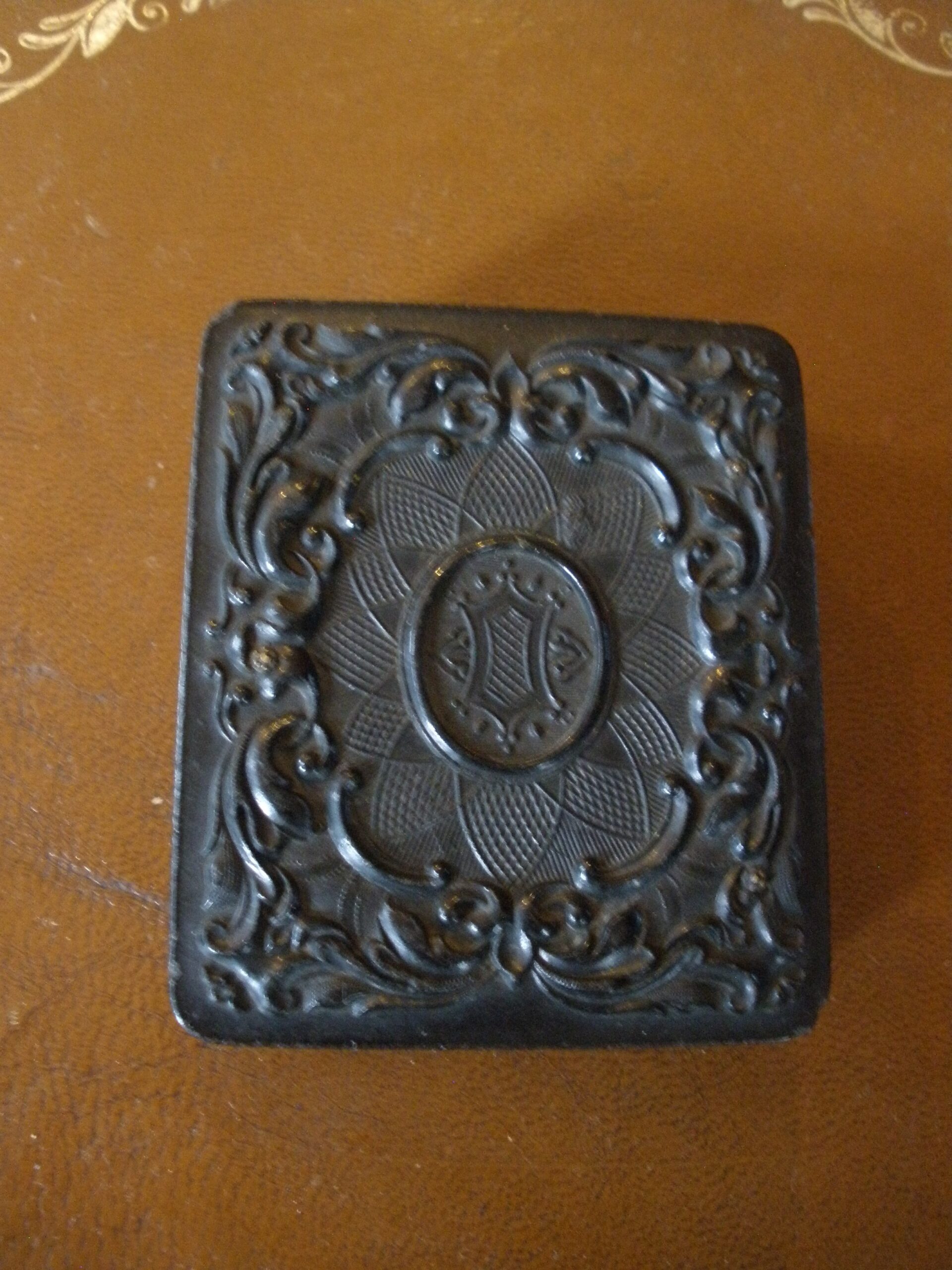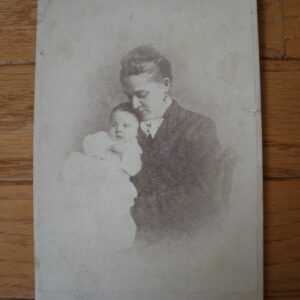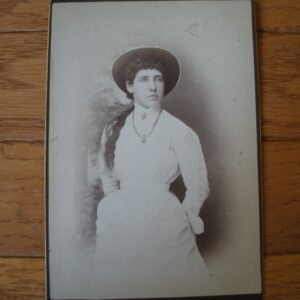For sale is a 1850s THERMOPLASTIC UNION PHOTOGRAPH CASE with CAMEO and AMBROTYPE Girl Photo. This is a thermoplastic union case contains a ambrotype photo that features a young girl in a nice dress and cape. The union case has green velvet lining. The embossed covers feature a white cameo with decorative scrollwork on the front and a decorated oval with similar scrollwork on the back. The case was probably made in the 1850’s and measures 3 inches by 2 1/2 inches. The civil war era Union case is marked with an 1857 patent date and was made by LITTLEFIELD & PARSONS and Company, Northampton, Massachusetts, the self proclaimed only legal manufacturer of daguerreotype cases. Inside of the case under the photo is the handwritten name Samuel Wiggin, Jackson, N.H. which likely represents the person who paid for the case and photograph. There was a Samuel Wiggin who lived between 1776 and 1861 in New Hampshire. Samuel had three daughters but during the time frame when this photo was taken, they would be old to be the person in the photo. Samuel also had three sons. It’s possible that the girl in the photograph was Samuel Wiggin’s granddaughter from one of his six children. A stellar top notch historic and museum quality photography collectible.
When an individual visited a photo studio in the late 1850s, he could choose the style of portrait—shiny reflective daguerreotype, glass ambrotype, metal tintype or a paper card photo. This is a key part of identifying a photo from the mid-19th century. If an image was taken before 1854, then it’s a daguerreotype, but if it was taken after that point, then it could be one of the others.
Daguerreotype was the first publicly available photographic process and was widely used between the 1840s and 1850s. Daguerreotypes photos have a mirror-like, highly polished silver surface and its dually negative/positive appearance when viewed from different angles or in raking light. Daguerreotypes are typically housed in miniature hinged cases made of wood covered with leather, paper, cloth, or mother of pearl. Daguerreotypes were produced on a thin copper metal support that had a polished coating of silver that was mirror-like. Daguerreotypes were sealed in glass for protection. The tintype replaced the daguerreotype in the 1860s because it developed much more quickly. A daguerreotype might take several hours to develop, but a tintype could be given to the sitter within minutes. Tintypes, patented in 1856, are actually on iron, not tin.
Ambrotypes, patented in 1854, are on glass. Backed with a dark substance (such as varnish or paper) they look positive, but when the backing starts to deteriorate, you can often see through the glass. This gives the image a ghostly appearance.
Gutta Percha consists chiefly of a hydrocarbon isomeric with rubber to make a hard durable thermoplastic substance. It is made from coagulated latex from trees which are found both wild and cultivated in Malaysia and Indonesia. Gutta Percha was America’s first plastic. In the context of antique photography, the cases made to house photos were called “thermoplastic cases”, “hard cases”, or “Union Cases.” The term Union comes from Peck who chose Union as the name to describe his process which was a union of shellac and sawdust. In 1854, Samuel Peck received his patent for inventing the thermoplastic process. He produced a hard durable plastic from a mixture of wood and shellac that was pressed into a mold. The result was a plastic-like product that still looks good one hundred and fifty years later.

